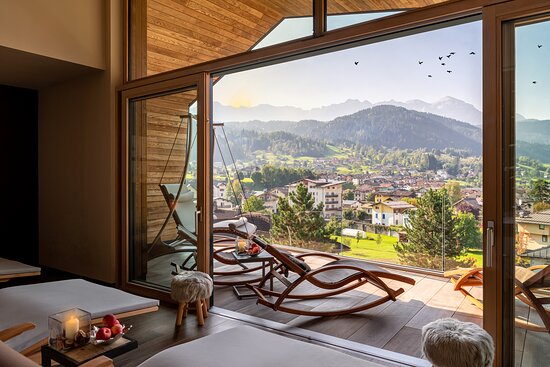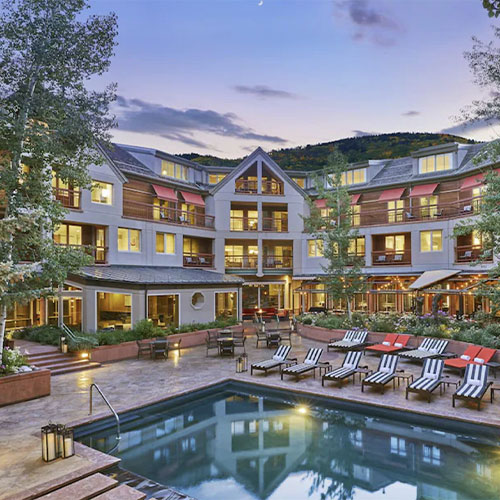
Travel to Sweden and to stay in Sweden, there’s a wide variety of eco-conscious accommodations that invite guests to engage with Swedish traditions, from the indigenous Sámi culture to the surrounding natural environment. Cities like Gothenburg, along with much of the west coast, prioritize sustainability and continue to develop businesses and tourism that are economically sound yet environmentally responsible. This approach is valued by both locals and tourists, and numerous hotels and experiences embody and practice these principles.
For those seeking luxury, some of Travel to Sweden finest lodgings can be found in Geunja, including a remote Sámi Eco Lodge nestled in the heart of Swedish Lapland. This hidden gem in the Arctic remains accessible mostly by invitation, emphasizing privacy and dedicated conservation. This region also includes Ammarnäs, a small Sámi mountain settlement where traditional practices and spiritual customs remain deeply rooted.
By Boat
Discover Travel to Sweden accommodations from a unique angle with a four-day boat journey through some of the country’s most captivating archipelagos, paired with luxurious stays along the way. Begin in Gothenburg and sail towards Lotshotellet, a quaint coastal hotel on Karingon island. Here, mornings can be spent taking refreshing dips in the sea right outside your room, while evenings offer gourmet dining highlighting Sweden’s freshest ingredients. Along the route, you’ll encounter scenic vistas, hiking trails, and charming spots such as Marstrand island and the stunning views from Dyrön island.
Read more about Climate Change
Read more about Belgium Hotel Facilities
Community and Culture
Experience Swedish life from a local perspective with a focus on community tourism. Sapmi Nature Camp, located within the Sjavnja nature reserve, is ideal for nature lovers interested in learning more about Sámi culture. The camp shares stories and traditions that provide a unique window into this enduring way of life. The surrounding lands serve as grazing areas for reindeer in the Unna Tjerusj Sámi community and are part of Laponia, a UNESCO World Heritage site where visitors can enjoy winter activities like skiing and snowshoeing.
From meatballs and fish to iconic chefs with impressive moustaches, Travel to Sweden has long held a strong cultural influence around the globe…
Yet when it comes to organizing the ultimate Travel to Sweden, crucial details are often overlooked—especially if you want to explore beyond the trendy capital of Stockholm.
Where should you visit? What’s the best time to go? What local dishes should you try? And what cultural surprises should you be ready for?
In this post, I’ll be sharing all my top travel to Sweden, gained through personal experience and a fair share of trial and error! Hopefully, you’ll find them useful.
- Keep in mind that Sweden is quite extensive.
First, when deciding where to visit, remember that Travel to Sweden stretches a long way from north to south, offering very different landscapes and experiences depending on the region.
A frequent mistake for newcomers is trying to do too much—wanting to see Stockholm while also heading up north to the Ice Hotel or Swedish Lapland.
Because distances can be significant, if you only have a limited amount of time, it’s better to focus on one area and explore it thoroughly instead of attempting to cover the entire country. On my last trip, for example, I concentrated mostly on Travel to Sweden’s West Coast, which let us dive deeper into the region and uncover some hidden gems along the way.
That being said, figuring out where to go requires a bit of research.
Unlike some of the more well-known European spots, Sweden doesn’t have as many world-famous landmarks or instantly recognizable attractions outside of Stockholm, which is unfortunate because the country is full of stunning places!
To get ideas for your trip, I highly recommend seeking guidance from local bloggers who know Sweden inside and out.
Some bloggers I found particularly useful during my planning were:
Katie’s Away – based in Gothenburg, with lots of fantastic insights about Western Sweden
Madeline Rae Away – a Canadian living in Malmö
And of course, the official Visit Sweden website is also extremely helpful, offering plenty of unique suggestions.
2. Discover More Beyond Stockholm
Sweden has 21 regions, which means there’s plenty to explore outside the capital, Stockholm, known for its rich history and vibrant cultural scene. Some top recommendations include:
Gothenburg, the country’s second-largest city, along with its archipelago boasting more than 20 islands.
Swedish Lapland, up north, celebrated for its wildlife, stunning landscapes, Sámi heritage, and home to the world’s first ice hotel.
Gotland, Sweden’s biggest island, famous for its scenic beauty and Viking-era history.
And for fellow enthusiasts, a fun fact: beyond IKEA furniture, there’s an IKEA hotel and IKEA museum in Älmhult, built where the very first IKEA store once stood. As a fan, I had a blast visiting, so it’s worth adding to your itinerary!
There are still countless other beautiful spots, especially for those who love nature. If your aim is to escape crowded tourist areas, Sweden is a perfect destination.
- Don’t forget to experience Sweden’s natural beauty (even during a city visit)
While Sweden may not boast the dramatic landscapes of its neighbor Norway, it is full of stunning natural spots—from scenic coastlines and islands to vast, green forests.
In what might be considered a “delightful problem,” I actually struggled quite a bit to decide where to go (both for nature and city experiences) because there are simply so many beautiful locations and hikes to choose from.
Unlike some countries with a list of iconic sights you have to see, Sweden has fewer must-do attractions. This can be challenging when planning, but it also means that once you discover a hidden gem, you can often enjoy it in peace without crowds.
So, if you visit Sweden—even if your trip includes major cities like Stockholm or Gothenburg—make sure to spend some time exploring nature!
AllTrails is an excellent app for finding great walking routes wherever you are.
- Understand the advantages and disadvantages of visiting each season
When it comes to deciding when to travel, it largely depends on your destination and what kind of experience you’re after.
If your goal is to enjoy Sweden’s natural landscapes and outdoor activities, the best time to visit is during summer, late spring, or early autumn.
On the other hand, if you’re interested in winter experiences like seeing the Northern Lights or going dog sledding, then winter is clearly the ideal season.
For city trips, there are benefits to visiting at any time of year. Just remember that in winter, daylight is limited… though there are plenty of cozy spots to escape to!
- Go in mid-June to experience Swedish Midsommar
If you ask me, I’d strongly suggest visiting in mid-June so you can take part in the magic of Swedish Midsommar.
Midsommar usually falls on a Saturday between June 20th and 26th, with most of the celebrations happening the day before, on Friday, also known as Midsommar Eve.
This is Sweden’s biggest holiday of the year. While it’s often celebrated privately with family and close friends, similar to Christmas, there are also several public events that tourists can join. It’s genuinely one of the most charming and heartwarming experiences you’ll come across.
People make flower crowns, enjoy fresh strawberries, decorate and raise a maypole, and then dance and sing around it… it’s so delightfully cute, it almost hurts.
NOTE: During this period, city centers and urban hotels are often quiet, as many Swedes head to summer cottages or the countryside for the celebrations. Keep in mind, though, that rural accommodations tend to fill up fast and can be expensive, so plan ahead.
- Think about camping for a budget-friendly stay
When it comes to places to stay, there are options to suit every budget.
The most economical choice is, of course, camping!
Thanks to Sweden’s “Right of Public Access,” known as ‘Allemansrätten,’ you can camp in the wild as long as you stay a safe distance from private homes or property. This gives you a lot of freedom if you don’t mind sleeping outdoors, and there are numerous companies, like this one, where you can rent camping gear if you’d rather not carry all your own equipment.
There are also many organized campsites, many of which provide small cabins for rent.
7. Confirm that linens and towels are provided
NOTE: In budget accommodations like cabins, it’s common that bedsheets and towels aren’t included and may come at an extra cost. Always check the details before booking. For instance, when we reserved a guest suite in Smögen, we had to pay an additional fee and put the sheets on ourselves—definitely not what we expected!
8. Learn about popular Nordic hotel chains
If you prefer hotels, keep in mind that many Swedish hotels belong to chains, some of which are mostly found in the Nordic region, so they might be unfamiliar.
I enjoy staying in unique or boutique hotels when I can, but for longer trips—or if you plan to visit the Nordics multiple times—it might be smart to stick with one chain. Joining their loyalty programs can give you access to special deals and potential savings, as many chains offer different brands for various budgets.
The biggest hotel chain in the Nordics is Scandic. Other well-known chains include Best Western, First Hotels, Strawberry (which covers brands like Comfort Hotel and Clarion), as well as select independent hotels. For luxury stays, Elite Hotels of Sweden has over forty distinctive properties, many located in historic, grand buildings.




